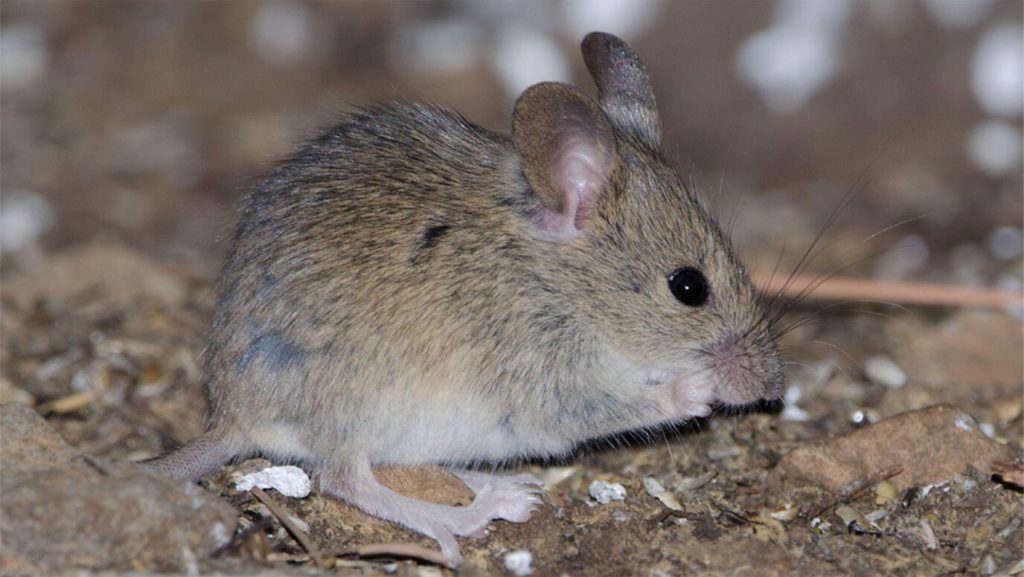A natural gene drive could steer invasive rodents on islands to extinction

In the battle against the invasive house mouse on islands, scientists are using the rodent’s own genes against it.
With the right tweaks, introducing a few hundred genetically altered mice could drive an island’s invasive mouse population to extinction in about 25 years, researchers report in the Nov. 15 Proceedings of the National Academy of Sciences. The trick is adding the changes to a section of mouse DNA that gets inherited far more often than it should.
Scientists have been creating similar extra-inheritable genes — called gene drives — in the lab. The chunks are designed to get passed on to most or all of an animal’s offspring instead of the usual half, and make those offspring infertile in the bargain. Scientists have used gene drives to reduce populations of mosquitoes and fruit flies (SN: 12/17/18).
But mammals are a different story. Scientists have previously synthesized a gene drive that gets passed on in mice about 80 percent of the time (SN: 1/23/19). But the drive isn’t strong enough to stop a population quickly.
Luckily, nature has it handled. A haplotype is a naturally occurring group of genes that gets passed on as a unit during replication. The genome of the house mouse (Mus musculus) has a particular haplotype, called the t haplotype, that gets passed on to offspring more than 95 percent of the time, instead of the typical 50 percent.
This natural gene drive has benefits, says Anna Lindholm, a biologist at the University of Zurich who was not involved in the study. It “evolved naturally and continues to be present in the wild, and we have as yet not found resistance to it in wild populations,” she says. It’s also not found in species besides M. musculus, meaning it probably won’t spread to other noninvasive mice.
Molecular biologist Paul Thomas and his colleagues decided to target the t haplotype with the cut-and-paste molecular tool called CRISPR/Cas9 (SN: 8/24/16). They used CRISPR to insert the gene sequence for the CRISPR tool itself into the t haplotype. When a male mouse carrying the altered t haplotype mates with a female, the inserted genes for the CRISPR tool spring into action. It uses a special genetic guide to target and inactivate the gene for the hormone prolactin — rendering any baby female mice infertile.
The best part is that the natural t haplotype can also sterilize males, says Thomas, of the University of Adelaide in Australia. Males with two copies — homozygous males — won’t reproduce at all.
“If you could get a t to spread through a population, you could get homozygous males being sterile,” he says. “And with the addition of the CRISPR element on top of that, we get homozygous females that are also sterile.”
To find out how well the t haplotype mice do on an island where mice are wreaking havoc on biodiversity, the scientists used a computer simulation of an island with 200,000 mice. The team found that adding just 256 mice with the CRISPR-altered t haplotype could successfully drive the mouse population to zero in around 25 years. Even without CRISPR, adding mice with the normal t haplotype could tank the population in about 43 years.
But models aren’t mice. In a final test, Thomas and his colleagues made the model reality. The team altered the t haplotype in a small group of mice in the lab and used genetic tests to show that those mice would pass on their new genetics 95 percent of the time.
“This is a clever idea, to build on the t haplotype natural drive system and use CRISPR, not for spreading the construct, but for damaging genes necessary for female fertility,” Lindholm says. “This is a big advance in the development of new tools to control invasive mouse populations.”
The next step, Thomas says, will be to test the effects in real populations of mice in secure enclosures, to find out if the genetically tweaked t can stop mice from reproducing. The scientists also want to ensure that any engineered mice released into the wild have some safety mechanism in place, so other mice elsewhere remain unaffected.
The final version might target tiny mutations that only occur on one island where the pest population is isolated, Thomas suggests. If the mouse escaped onto the mainland, its altered genes would have no effect on the local mice. The scientists also want to consult with people living in the area, as officials did when genetically modified mosquitoes were released in Florida (SN: 5/14/21).
Finally, he notes, 25 years is a long wait for some endangered island populations. “We would love to see CRISPR work faster,” he says. “It’s still a work in progress.”